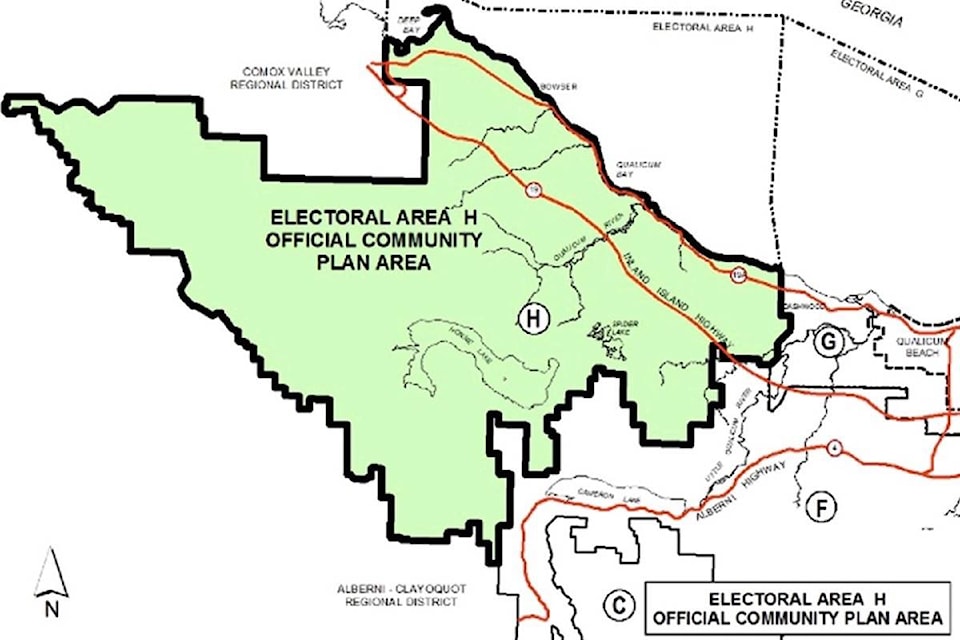The Regional District of Nanaimo board has adopted a new Official Community Plan for Electoral Area H.
The new bylaw, which the board unanimously endorsed on Dec. 12, features a myriad of updates that include new mapping and revised policies to reflect a changing community.
Prior to adopting the new OCP bylaw, the proposal was first referred to agencies and First Nations for comment and feedback. Public engagement and information sessions were also held to provide stakeholders and residents an opportunity to air their concerns, suggestions and objections. The majority supported the new OCP, directors noted.
The OCP features a long-term vision for the future and course of action that needs to be undertaken for the area. Its objectives and policies will serve as a guide for future land use, servicing and physical, social and economic changes in the region.
The OCP applies to all of Electoral Area H, which includes the unincorporated communities of Deep Bay, Bowser, Qualicum Bay, Dunsmuir, Horne Lake, Spider Lake and surrounding areas. Area H boundaries also coincide with the marine area, with the executive committee acting as a local trust committee (Ballenas-Winchelsea Islands) and is directly adjacent to the Denman Local Trust Area boundary.
Since 2015, the RDN has been working on revising the Electoral Area H Official Community Plan first adopted in 2004 and amended in 2010 when the Bowser Village Plan was added to the OCP. The OCP revision was prompted by the slower pace of development in the region while major changes have been occurring in the area. They include the establishment of the VIU Deep Bay Marine Field Station in Deep Bay, expansion of Deep Bay Harbour, amendments to provincial legislation such as the Riparian Areas Regulation, allowance for secondary suites, and introduction of building inspection.
The population of the OCP area has also increased from 1,648 residents in 1986 to 3,884 residents in 2016, which represented an annual five per cent growth in the late 1980s and early 1990s. The growth rate slowed in the later half of the 1990s and continued through 2016. Based on a modest growth of six per cent, which is the average reflected in the past two census periods, the area’s population is expected to surpass 5,000 people by the 2036 census.
The area’s demographics has also aged significantly since 1981. The 2016 median age of residents was 58.8 years old which is higher than the provincial median age of 43 years old. This trend is projected to continue and will have a significant impact on land use, housing, services and employment, the RDN said.
The estimated population growth rate would require 100-150 dwelling units in Electoral Area H over the next five years, according to the OCP. Along with the aging population anticipated, there will be a high demand for housing that the senior population would look for that is smaller in size and located closer to amenities or a seniors’ housing facility.
The future housing needs will generally be centred in the rural village centres and through the infill and subdivision of existing rural and rural residential lands, and within surrounding municipalities that have greater levels of services.
